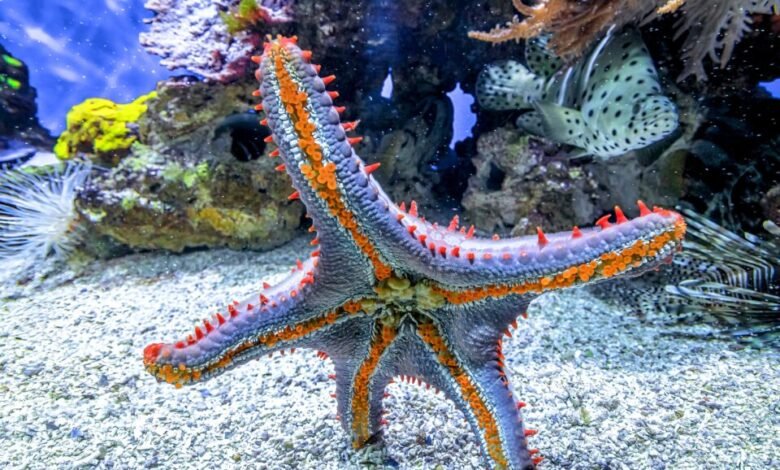The Remarkable Anatomy of the Sea Star

Welcome to the fascinating world of sea stars! These incredible creatures, also known as starfish, are not only beautiful to look at but also possess a truly remarkable anatomy. From their unique body structure to their incredible regenerative abilities, sea stars are truly a marvel of nature. In this article, we will delve into the intricate details of their anatomy and explore the wonders that lie beneath the surface of the sea.
The Body Structure of a Sea Star
At first glance, a sea star may appear to be a simple creature, but upon closer inspection, you will discover a complex and intricate body structure. Let’s take a closer look at the key components:
- Central Disc: The central disc is the main body of the sea star, and it is where all the vital organs are located. It is typically round or pentagonal in shape and serves as the anchor for the arms.
- Arms: Sea stars have multiple arms, usually ranging from five to nine, radiating out from the central disc. These arms are flexible and covered in tiny tube feet, which help the sea star move and capture prey.
- Tube Feet: The tube feet are small, suction cup-like structures that cover the underside of the sea star’s arms. These feet are not only used for movement but also for feeding and sensing the environment.
- Mouth: Located on the underside of the central disc, the mouth of a sea star is surrounded by a ring of small, movable tube feet called ambulacral feet. The mouth leads to a unique digestive system that allows sea stars to consume prey much larger than their own size.
- Water Vascular System: The water vascular system is a network of fluid-filled canals that run throughout the body of a sea star. It helps in movement, respiration, and feeding. The system is also responsible for the sea star’s ability to regenerate lost body parts.
The Regenerative Abilities of Sea Stars
One of the most astonishing features of sea stars is their incredible regenerative abilities. If a sea star loses an arm or even a significant portion of its body, it has the remarkable ability to regenerate and grow back what was lost. This ability is made possible by the sea star’s unique anatomy and the presence of specialized cells called pluripotent cells.
Pluripotent cells are undifferentiated cells that have the potential to develop into any type of cell in the sea star’s body. When a sea star loses a body part, these cells are activated and begin the process of regeneration. Over time, the pluripotent cells differentiate into the specific cells needed to rebuild the lost body part, including muscles, nerves, and even internal organs.
For example, if a sea star loses an arm, a small bud will start to form at the site of the injury. This bud contains pluripotent cells that gradually develop into a new arm. The process of regeneration can take several months, but eventually, the sea star will have a fully functional and indistinguishable replacement for the lost arm.
Examples of Sea Star Regeneration
There have been numerous documented cases of sea stars regenerating lost body parts. One notable example is the Linckia sea star, which can regenerate an entire body from just a single arm. Researchers have conducted experiments where they removed the central disc of a Linckia sea star, leaving only an arm behind. Over time, the arm regenerated the entire body, including all the vital organs.
Another fascinating example is the ability of some sea stars to regenerate multiple arms simultaneously. In a study conducted by marine biologists, it was found that certain species of sea stars can regenerate up to five arms at once. This remarkable feat of regeneration showcases the incredible potential of these creatures.
Conclusion
The sea star’s anatomy is truly a marvel of nature. From their intricate body structure to their extraordinary regenerative abilities, these creatures never cease to amaze. The next time you come across a sea star, take a moment to appreciate the wonders that lie beneath its beautiful exterior. The sea star is a testament to the incredible diversity and adaptability of life in our oceans.




